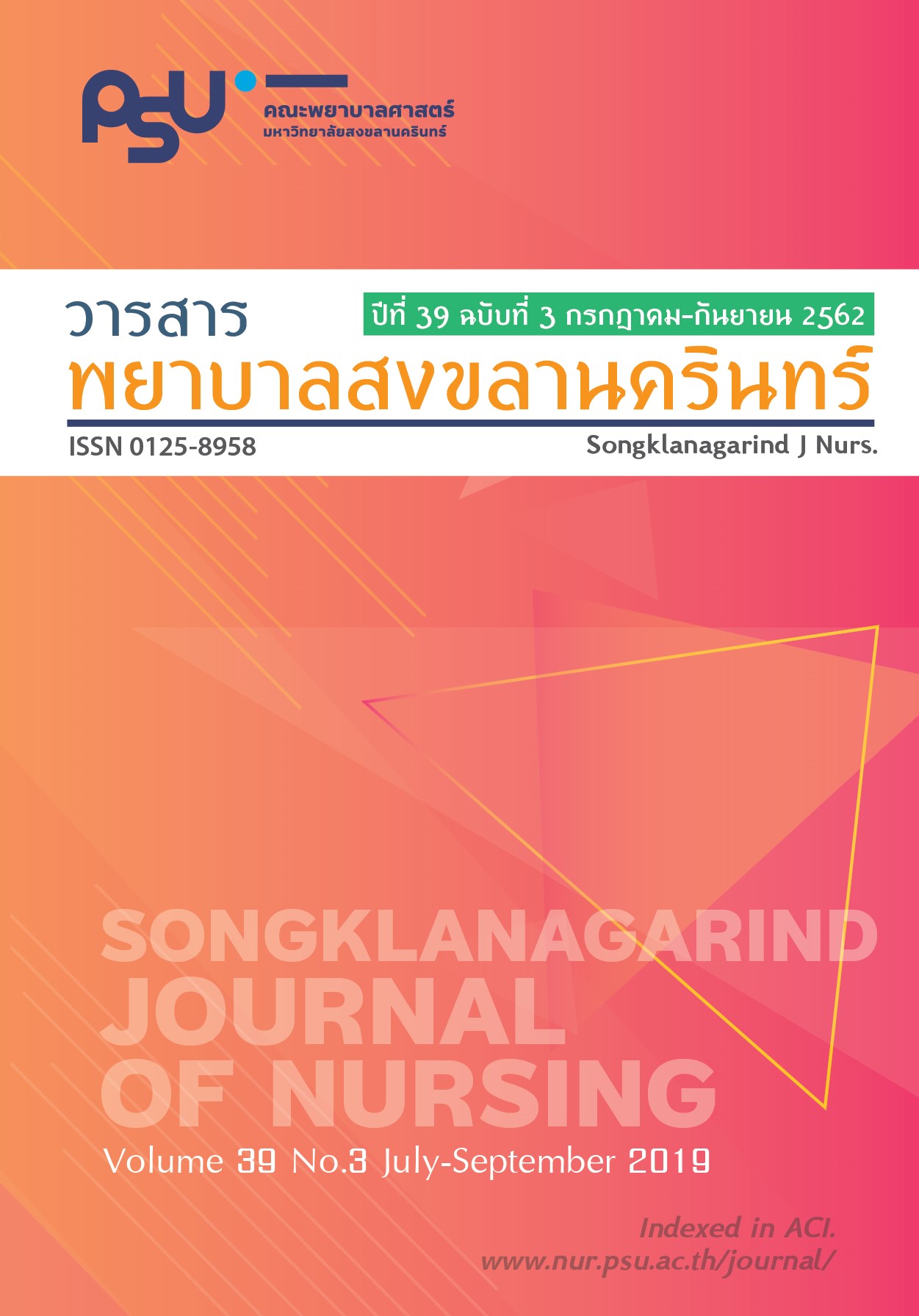Translation Validity and Reliability of Modified Social Expressive Language and Language Comprehensive Subscales of the Child Development Inventory for Children with Autistic Disorder (Thai Version)
Main Article Content
Abstract
The purpose of this study was to translate and examine the validity and reliability of the modified Thai version of social, expressive language and language comprehensive subscales of the Child Development Inventory (CDI). Forward and backward translation was applied. The process followed the back-translation procedure of WHO guideline. To test the validity and reliability of the CDI, content validation process was verified by five experts and reliability process was tested by thirty participants. The results showed that the modified CDI included similar content as the original. The content validity was high (Content Validity Index: CVI = .85 – 1.00) while the internal consistency reliability for the overall questionnaire was also high (Kuder-Richardson 20: KR-20 = .88 - .94). In conclusion, the translation this modified subscale of CDI into Thai was successfully conducted. The Thai version of this subscale can be used in the assessment of the social, expressive language, and language comprehensive skills among Thai children with autistic disorder.
Article Details
References
World Health Organization. Autism spectrum disorders [Internet]. [cited 2017 May 6]. Available from: http://www.who.int/ mediacentre/factsheets/autism-spectrum-disorders/en/
Phillips J, Minjarez M, Mercier E, Feinstein C, Hardan AY. Autism spectrum disorder. In: Steiner H, Handbook of development psychiatry. (Ed.). Singapore: World Scientific; 2011.
Toth K, King BH. Autism spectrum disorders. In Cheng K, Myers KM. Child and adolescent psychiatry: The essentials. 2nd ed. Philadelphia, PA: Wolters Kluwer Health, Lippincott Williams & Wilkins; 2011.
Volkmar FR, Klin A. Issues in the classification of autism and related conditions. In: Volkmar FR, Paul R, Klin A, Cohen D. Handbook of autism and pervasive development disorders. 3rd ed. Hoboken, NJ: John Wiley & Sons; 2005.
Ireton H. Child development inventory manual. Minneapolis, MN: Behavior Science Systems; 1992.
World Health Organization. Process of translation and adaptation of instruments [Internet]. [cited 2017 May 6]. Available from: http://www.who.int/ substance _abuse/ research_ tools/translation/en/
Browne RH. On the use of a pilot sample for sample size determination. Statistics in Medicine. 1995; 14: 1933-1940.
Lancaster GA, Dodd S, Williamson PR. Design and analysis of pilot studies: recommendations for good practice. Journal of Evaluation in Clinical Practice. 2002; 10(2): 307-312
Waltz CF, Strickland OL, Lenz ER. Measurement in nursing and health research (4th ed.). New York: Springer Publishing Co; 2010.
Polit DF, Beck CT. Nursing research: Generating and assessing evidence for nursing practice. 8th ed. Philadelphia: Lippincott Williams & Wilkins; 2008.
Wu HC, Hsu CC, Chiu V, Yeh YJ, Wen SH. Diagnostic validity of Chinese of the Child Development Inventory in screening children with developmental language delay. Tzu Chi Medical Journal. 2013; 25(4): 228-232.
Duyme M, Zorman M, Tervo R, Capron C. French norms and validation of the Child Development Inventory (CDI): Inventaire de developpement de I’ Enfant (IDE). Clinical Pediatrics. 2016; 50(7): 636-647.

